How to Grow Violas
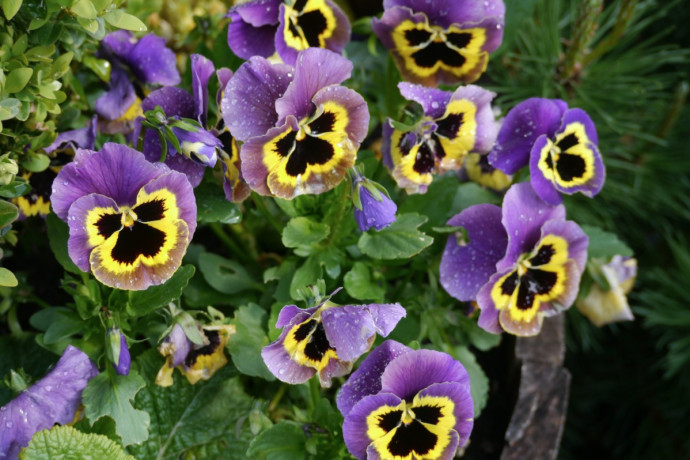
There are over 500 different species in the Viola genus, including annuals, perennials, and even some subshrubs. Many self-seed and give you years of enjoyment. Violas are edible flowers and make unexpected garnishes and salad ingredients. They can also be candied for a frosty effect or to decorate cakes or other sweets. Violas tend to have small flowers and tolerate heat, with a long blooming season from early summer to early fall. Pansies have larger, more intensely colored flowers and are most commonly used as winter bedding. However, there is such a wide selection of violas that you can find a plant to suit any garden situation, from hanging baskets to patio containers to woodland borders.
Violas are primarily cold-bloomers; they are perfect for beginning and ending the season in colder climates and bridging the seasons in warmer zones, where they can bloom throughout the winter. The timing for planting violas depends on your climate. In cool climates, they are usually planted in the spring; in climates without winter frost, they can be planted in the fall.
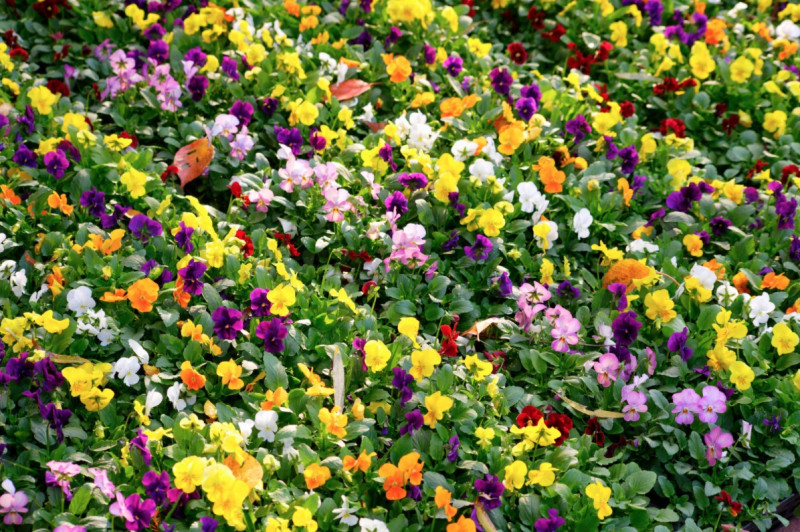
Where to plant violas
Plant violas in moist but well-drained soil, in partial shade.
How to plant violas
It is possible to grow violas from seed. Sow them lightly in a tray of seed soil and pot them up when the seedlings are large enough to handle. If you buy viola plants, dig a small hole, add a pinch of grit and well-rotted garden compost, plus a spoonful of mycorrhizal fungi, and water well.
The size, compact habit and long flowering time of violas make them perfect for containers. Hanging varieties are exquisite in hanging baskets and dropping over the edge of containers and window boxes.
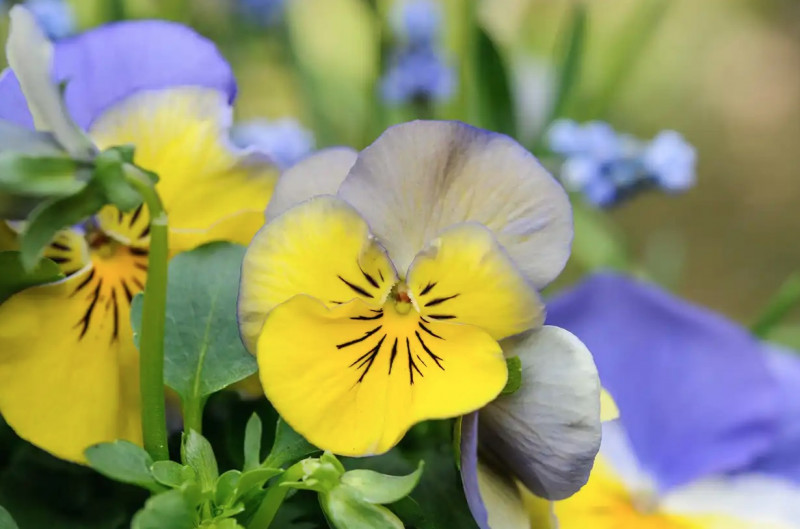
Planting violas correctly
Sprinkle viola seeds on the ground and then cover with about 1/4 inch of soil. The seeds should germinate in 7 to 14 days. Keep the seeds moist until they germinate. Thin the seedlings to about 8 inches apart.
If planting from transplants, choose small transplants and plant them at the same depth as the nursery pots. Maintain a spacing of about 15 inches between plants.
Violas grow best in partial shade in warm weather. In cooler weather, violas grow well in full sun.
Light
Violas like full sun, but not the heat it brings. This is not a problem in cool spring temperatures, but if you plant in summer, make sure they get some shade during the hottest part of the afternoon.
Soil
Pansies and the other violas do best in moist soil, such as a peaty potting soil or garden soil that is heavily amended with organic matter. Pansies like a slightly acidic soil; peat moss added to the soil helps to slightly acidify the garden soil.
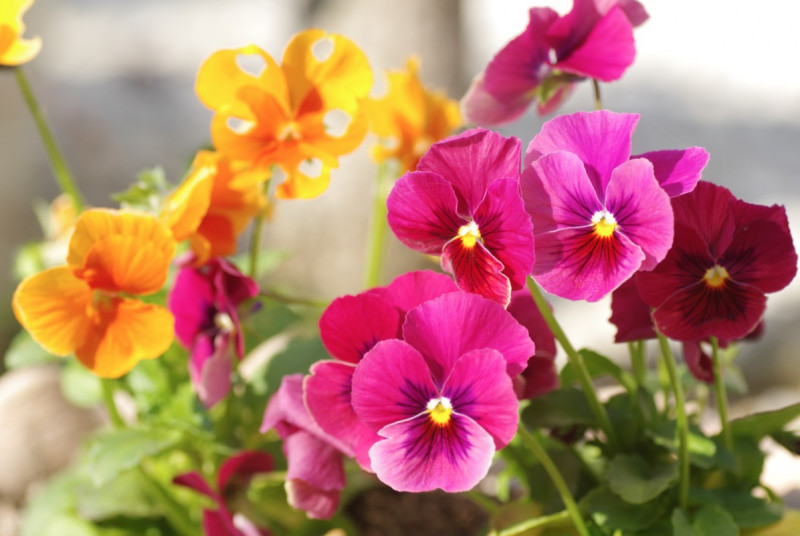
Watering
Do not let violas dry out. Water regularly, but allow the soil to dry out between waterings. They can tolerate some drought, but bloom best with regular watering. Water violas well until the plants are established.
Temperature and humidity
Violas love the cool weather of early spring and thrive in milder temperatures of 40 to 70 degrees Fahrenheit. Mulch and water help offset the stress of high temperatures.
With proper care, violas can bloom throughout the summer and most will bloom again in the fall. Or, especially in hot, southern climates, they can be removed and replaced with another flower during the summer, then replanted when cooler weather returns in the fall.
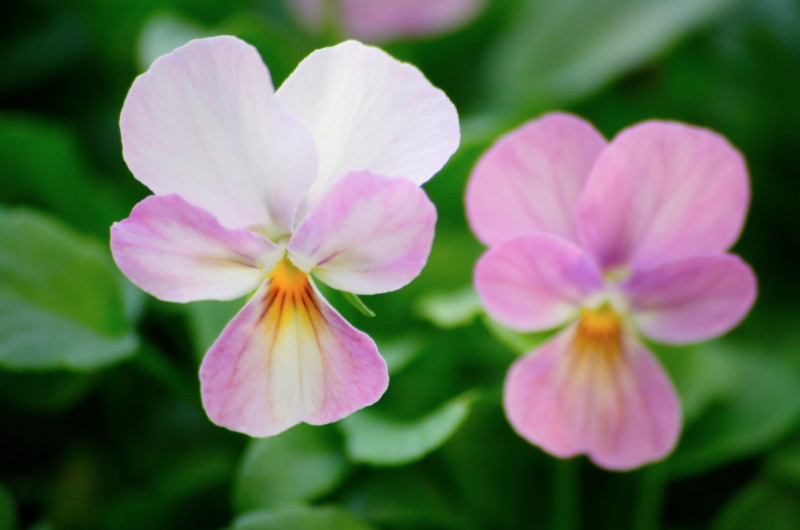
Fertilizer
Use a slow-release fertilizer that is worked into the soil. Fertilize in spring and again in late summer to encourage a fall bloom.
Pruning
To encourage flowering and extend the blooming season, remove faded flowers by pinching off the flowers at the base of the flower stalk. You can revive leggy or overgrown plants by pruning them back to a height of about 3 to 4 inches.
Common pests/diseasesTo avoid gray mold, don't leave your plants in cool, damp conditions. Make sure your violas get plenty of sun and have good air circulation. If you notice aphids, wash the plants with a strong spray of water, or treat with insecticidal soap if the problem is severe.
